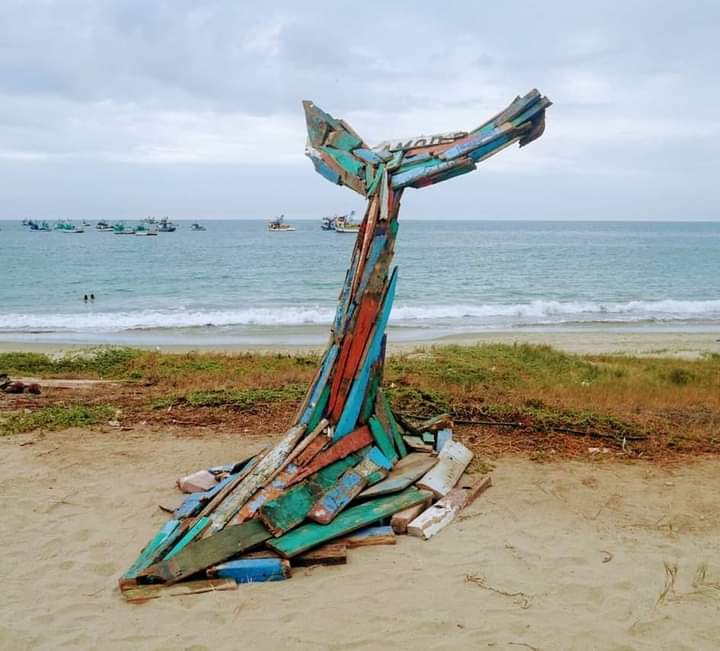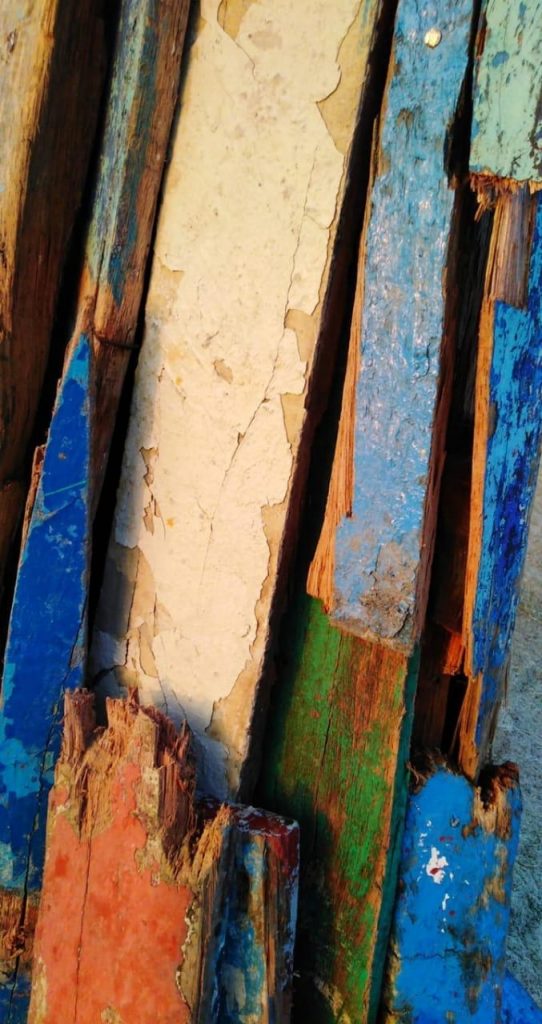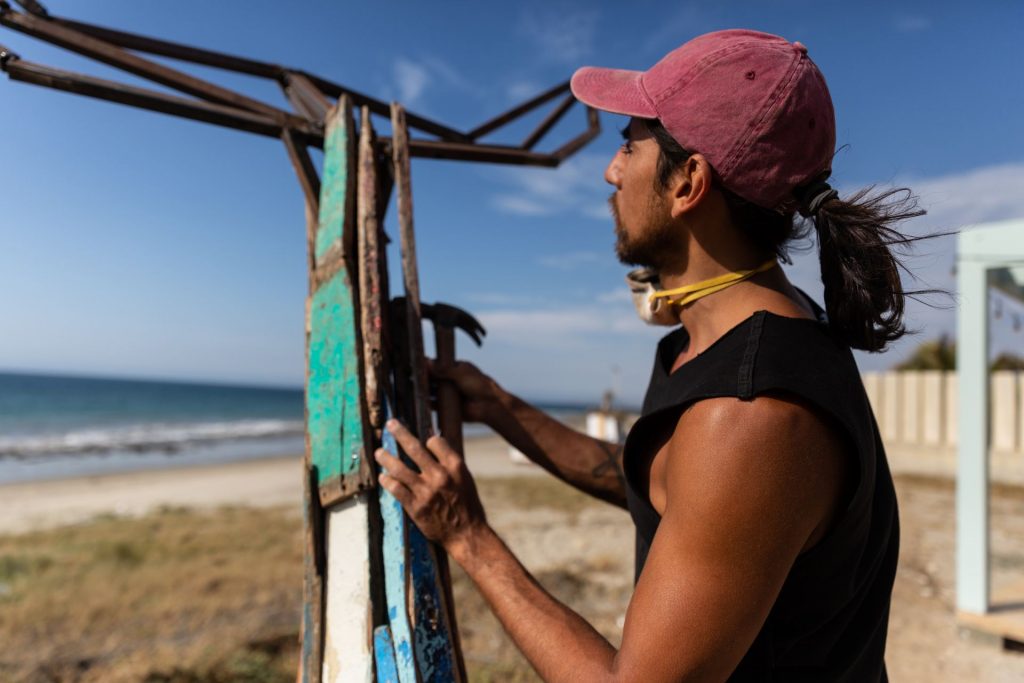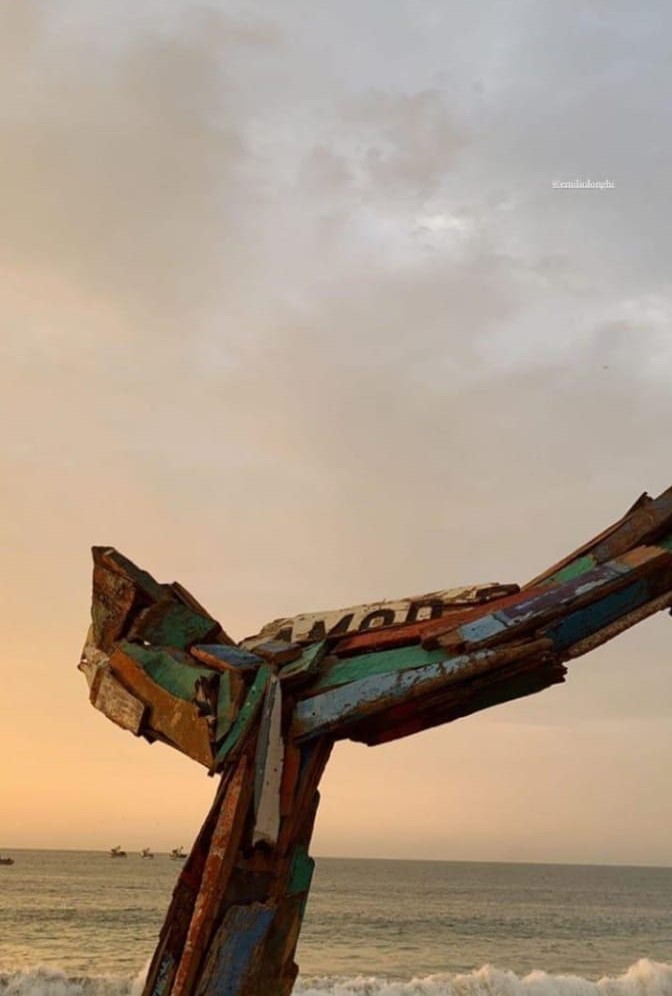“You start to understand that art has this potential to change the future when you make a stand.”

Long before all of the petroleum activities started in the North of Peru, there were a lot of fishermen. Thousands of fishermen who used these smaller boats made of wood, not like the bigger industrial boats.
Here in Peru, we have miles and miles of ocean that can be fished, but when you pass like 200 miles you get to the area where they have a lot of huge boats and all the Chinese vessels that are in that area. But then we have these five miles offshore we can call the ‘low self-esteem line’ that is specifically protected for the artisanal fishermen but sometimes the industrial fishermen are getting into those five miles.
So, the people fishing there need to be empowered, as they’ve been living there all their life you know? But the country and state value them like worthless. As an artist you have to understand the local problems, because there are several things you should worry about, like how to make your art sensitive to the people.
So, there was all this beautiful, beautiful wood from the artisanal boats that washed up on the shore, making it look like it was just trash. But it was so beautiful, like you could just take a piece and hang it on your wall like a painting. But it is also important to consider how you can introduce symbols that people understand within the collective imaginary.

When I first saw this wood, I felt that it was like layers and layers of life. You can see how over the years the wood has changed with layers and layers of paint. And I was like yes, this is history, and this is about a relationship between systems. Even I saw it with the nails used in the wood- they weren’t industrial nails, they were like those ones that people would have worked themselves with their own hands…I haven’t seen nails like this before because usually mass-produced ones are all the same because a machine made it, right? But with these ones you can see its different.
Anyway, so now a lot of these artisanal fishermen that would have used these wooden boats are always in a conflict with the big resorts, or the tourists. But they are not communicating with them, they don’t focus on a solution there is only the problem. So, I this I saw an opportunity to work with the resources that existed, alongside the resort Selena. It’s not a big enterprise but they have a chain of hotels internationally and are eco-friendly. They want to cooperate with the fishermen and to make a connection, so I started to do the same thing, to ask myself how can we work better? And that is where the wood from the boats came in.
I went to one of the artisanal fishermen and told him about the project and introduced him to someone representing the hotel, and he knew about the space where it would be, like they really hated each other for that. We said how we really wanted to clean the shores, and to use the materials there, as in the end everyone had to share the same space. But also in return, they wanted to make a deal to sell their fish to the hotel but at a good price, so they had to communicate to cut out the middleman and do it directly.

I chose to make the whale out of the wood for this reason. In that moment, when I was planning to build the whale, it was a special season, from September to October, when you can see the whales and how they jump…they are so magnificent and huge, and even from the shore you can really get a connection with them, even it can be like 200 metres away. And then if you go inside the water, you can hear the conversation between the whale mother and her child, so that’s beautiful. It’s one of the largest animals but is also in the same space as yours, and I thought that making that connection work was great.
I went to Selena a few weeks ago to see the sculpture, and it was being treated really well. Even sometimes, you can see the wood drifting from the sea and then suddenly a wave comes, and it moves and it’s like you can imagine that the wood is another whale. Its an intermediation that I haven’t done myself! Like the sea throws out the wood and when it comes close to the whale sculpture it is all transformed into something special…it offers up things that I didn’t expect. It is working and the message is there!

Emilio Longhi is represented by BLOC ART

